Tips to Avoid COVID in India
The National Science Foundation (NSF) in the United States has funded our research for several years on science-based policies to reduce viral infection risk in crowded locations such that there is minimal disruption to human activities. The risk of the currently common coronavirus infection, called COVID-19, is avoidable by taking certain precautions. This is more true now that multiple vaccines are available to provide protection from disease and severe illness. We share below important points to help you through this epidemic. We focus on preventing COVID. If you are already dealing with COVID, then please look up the list of other resources. Always talk to your public health official for suggestions based on current local trends.
Summary
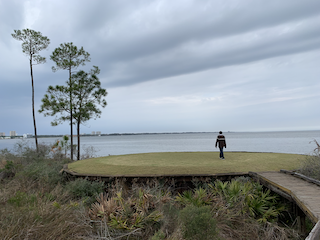
Maintain the maximum physical distance possible from others, preferably over 10 feet.
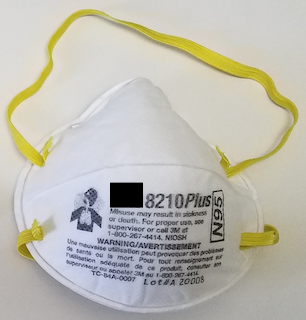
Wear a good quality mask – N95 is the best option. This is essential indoors even if there is no crowd, and outdoors if you cannot keep enough distance from others.
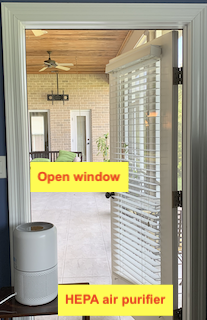
Open the windows when you are indoors with other people if it is possible. A HEPA air filter will also reduce risk.
What should you know?
- It has become clearer that young and healthy persons are at higher risk now than they were earlier. Even if you get a mild case, you may experience what is called “long COVID” or exacerbate other health issues. So, everyone should take precautions, even if you are vaccinated.
- With a few precautions, you can go back to your daily activities. In particular, N95 masks can almost eliminate risk in most situations; this can be your key to resuming your normal activities.
- It is not advisable to postpone essential medical care. With suitable precautions, it is most likely safer to seek treatment than to delay it. Hospitals also have beds reserved for non-COVID patients.
- The virus is found in fluid droplets that an infected person may spread while breathing, speaking, or coughing. Aerosols are like droplets but smaller. If you breathe either droplets or aerosols, you could get infected; this is the main risk factor. You could also get infected through your eyes, but it is a much lower risk.
- Droplets usually do not travel far. That is the reason the World Health Organization (WHO) and U.S. Centers for Disease Control and Prevention (CDC) recommend a distance of 3 feet to 6 feet from others to ensure safety. But if there is a breeze, then droplets can travel farther.
- Aerosols spread much farther than droplets and remain in the air for a long time, even after an infective person has left the room. CDC’s and WHO’s recommendation of 3-6 feet distance is not enough to protect you from aerosols.
- Aerosols can be removed in the following manners: (i) when a few hours have elapsed since the infective person left, (ii) it has dissipated into the open air, or (iii) a HEPA filter has cleaned the air.
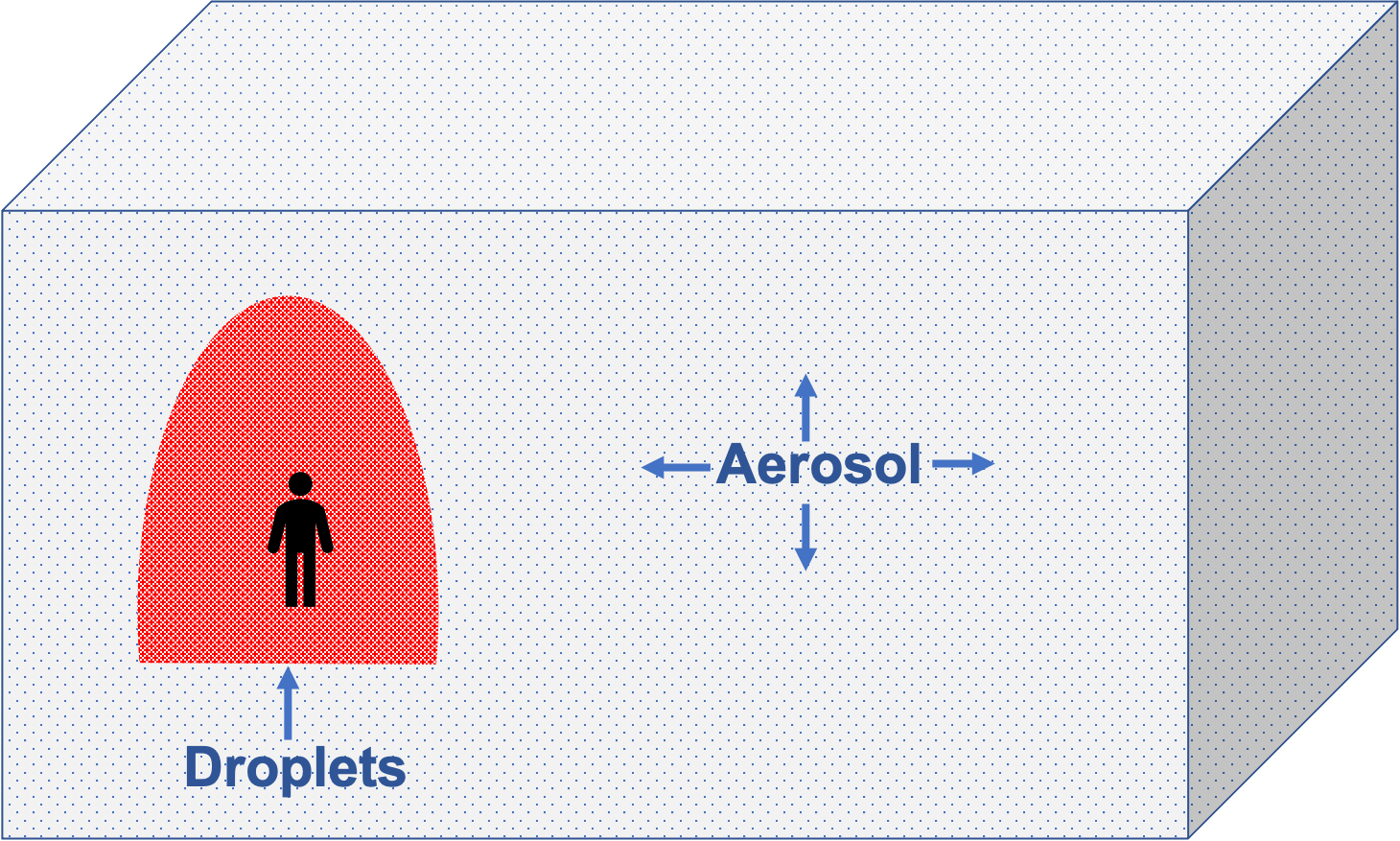
Droplets (red) spread close to an infective person while aerosols (blue) spread far.
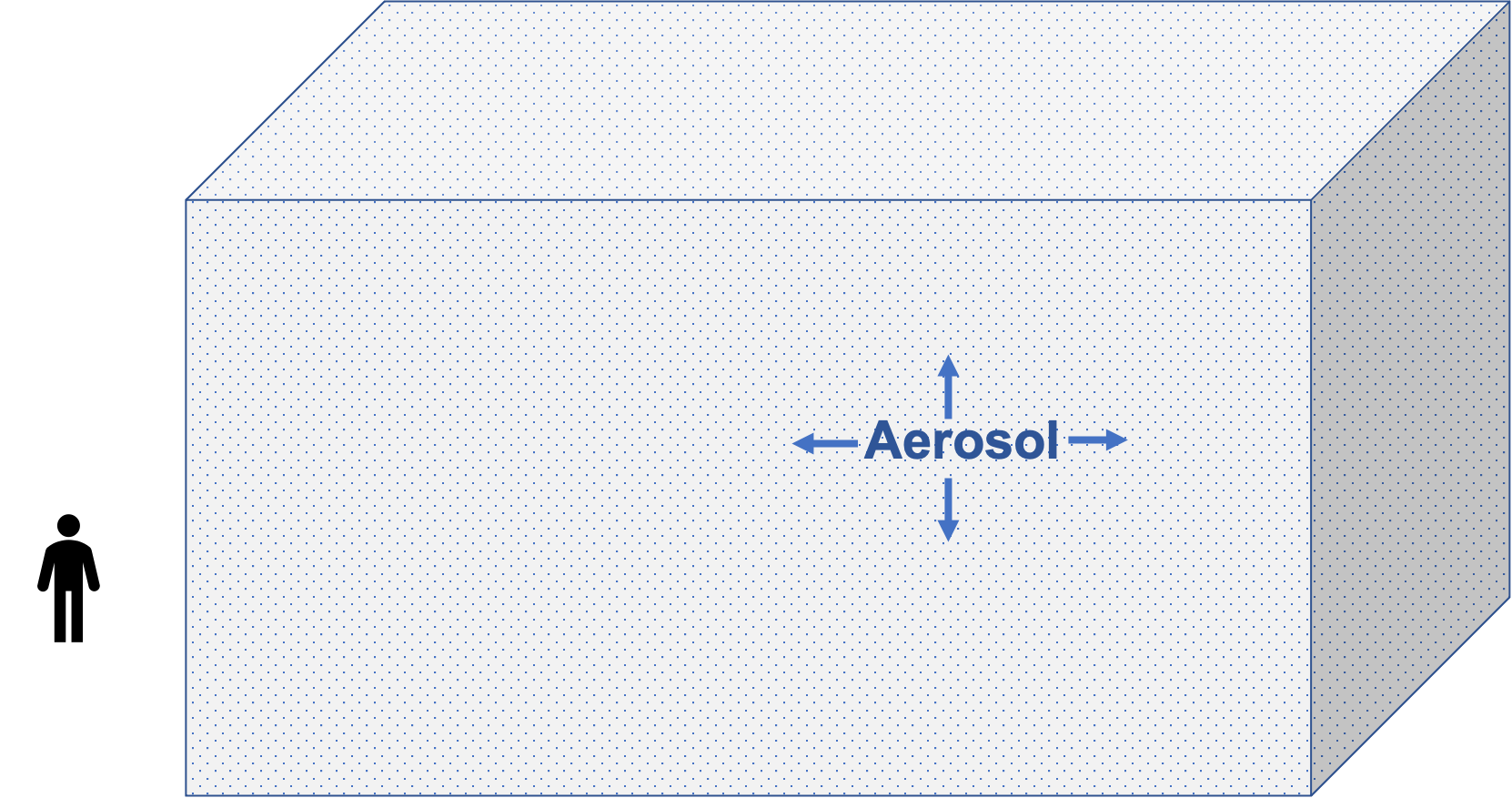
Aerosols remain in the room long after an infective person has left.
- Viruses spread by an infective person may fall on solid surfaces, such as tables and chairs. If you touch such a surface and then put your fingers in your mouth, eyes, or nose, then you could get infected. This type of transmission is rare in developed countries but may play a more significant role in crowded areas where it is difficult to keep the surfaces clean.
What should you do?
It is quite easy to avoid COVID for most people. The suggestions below are not meant for frontline workers, such as health care providers or those caring for sick persons, who should follow the guidelines of their professions or physician.
- Physical distancing: Keep a reasonable distance from people you do not live with. This is the most effective step. But please remember that aerosols can be present for a few hours after an infective person has left. It would be best if you distanced yourself in space and time as much as possible.
- Good masks: Regular paper or cloth masks are too flimsy to keep you safe in high-risk situations. However, if you don’t have an N95 mask, then a cloth mask is considerably better than no mask.
- The ideal mask is an N95 mask with ties around the head rather than ear loops. If you can’t get one, then you can get an N95 with ear loops or a KN95 mask. If you use a KN95 mask, then you can wear a cloth mask over it when you visit locations with high risks, such as health care providers.
- CDC recommends against masks for babies below 2 years old, while the WHO does not recommend masks for children below 5 years old. There are risks associated with masks for babies, such as choking hazards. You may not find N95s for older children that fit well due to their size. You can have them wear a surgical mask and perhaps a cloth mask over the surgical mask.
- You should use your mask in any situation that you are exposed to droplets or aerosol. These would be when (i) indoors, if people are present at any distance or had been present up to a few hours earlier, and (ii) crowded locations outdoors. Well ventilated indoor areas with windows open are at lower risk of aerosol spread than those not well ventilated.
- Ventilation: Good ventilation is necessary to let aerosols leave a room or vehicle. It is advisable to keep windows open to the outside if you cannot avoid meeting people indoors, for example, when a household help or repairman is present. Purchase a portable HEPA filter and run it while anyone is present and for a couple of hours after that.
- Clean your hands: Washing your hands with soap can remove viruses that you might have touched. It is also advisable to shower and change clothes after visiting a location where you might have been exposed to the virus.
- Face shield: You could wearing a plastic face shield along with a good mask in high-risk situations.
- Toilet: There is some indication that COVID might have spread in other apartments through the plumbing system due to aerosols. Make sure that you use all drains in your house at least once a week. This includes toilet bowls, sinks, floor drains, etc. Pour water in the drain, flush the toilet, and open the tap in the sink. Please keep the toilet bowl cover closed. This is especially a concern with old plumbing systems.

Physically distanced outdoors; may be safe without masks. [Photo: by MONUSCO is licensed under CC BY-SA 2.0]

Others might have shed aerosol-borne viruses earlier; need masks. [Photo: by docoverachiever is licensed under CC BY 2.0]

Too crowded outdoors; need masks. [Photo: by CharlesFred is licensed under CC BY-NC-SA 2.0]

Well ventilated space; may be safe without masks when people maintain physical distance. [Photo: by U.S. Army ROTC is licensed under CC PDM 1.0]

The second passenger to your left is wearing a face shield but a mediocre (blue) mask. It is essential to wear a good mask in indoor spaces, like the first passenger on the left, although one with ties around the head would have been better than ear loops. A face shield is helpful in high risk locations, such as hospitals. [Photo: by N509FZ is licensed under CC BY-SA 4.0]
Other resources
- COVID-19 myths and facts. WHO has a reasonably good web page presenting facts related to COVID-19.
- COVID care in India. India COVID SOS has information on home care that would help.
- Availability of medical care in India.
- CovRelief includes information on the availability of treatment facilities for a large number of cities.
- Sai Krushna Charitable Trust has a team of over a thousand volunteers who help patients looking for beds, Oxygen, medicines, consultation, and plasma with curated information for each city where they serve. They cover fewer cities than CovRelief but are excellent for the ones they do serve. Their 24/7 helpline phone numbers are provided below.
- Andhra Pradesh: 040 4821 3300
- Bangalore: 080 4719 0606 (WhatsApp and phone)
- Bhubaneswar: 080 4716 8040
- Chennai: 044 4631 4343 (WhatsApp and phone)
- Delhi: 011 4224 9899
- Hyderabad: 040 4821 3333 (WhatsApp and phone)
- Mumbai: 022 4939 9797
- West Bengal: 033 4190 1199
- An NITT alumni initiative covers over 27 cities 24/7. (It was originally started for NITT alumni but is available now for others; please enter
NAin any field that ask for NITT information.) They can also be contacted at the following WhatsApp number (no calls): 96 864 50 748.
Acknowledgments
- The National Science Foundation (NSF) in the United States has funded our research for several years on science-based policies to reduce viral infection risk in crowded locations such that there is minimal disruption to human activities. Any opinions, findings, and conclusions or recommendations expressed in this material are those of the authors and do not necessarily reflect the views of the National Science Foundation or other funding sources.
- Prof. Rodney Guttmann, University of West Florida, helped produce this simplified version of our more detailed document.
